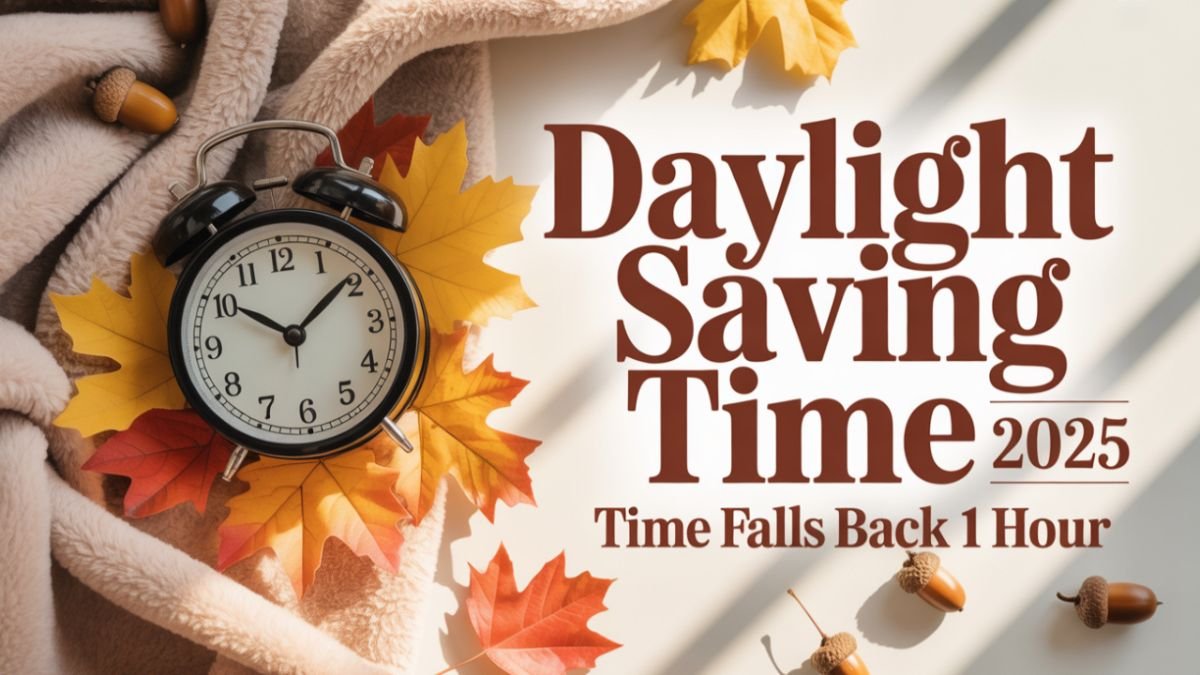Like every year, Daylight Saving Time (DST) is going to be implemented this year. In 2025, this change will happen a little earlier. This means that our clocks will be set back, giving us an extra hour of sleep. This change not only affects sleep and time habits, but also impacts our daily lives, work habits, and health.
History and Purpose of Daylight Saving Time
Daylight Saving Time was primarily introduced to save energy. When days are longer, clocks are set forward or backward to maximize sunlight. This reduces electricity consumption at night. This idea was first introduced in the early 20th century and has been regularly implemented in many countries since then.
Date and Time of the Time Change in 2025
This year, clocks will be set back a little earlier than usual under Daylight Saving Time. In most countries, this change occurs on the last Sunday of October. In 2025, this change will take effect in some regions on the night of October 26th. On this night, people will set their clocks back one hour. This means that the morning will get light earlier and the day will set earlier in the evening.
Impact of the Time Change on Daily Life
DST impacts our daily lives in many ways. The biggest impact is on our sleep. Because our body’s natural biological clock, or biorhythm, suddenly changes, people may experience trouble sleeping or feel tired for the first few days. Furthermore, children and the elderly may also find it difficult to adjust to this change.
Advantages and Disadvantages of DST for Working People
Daylight Saving Time brings some benefits and some challenges for working people. Getting light earlier in the morning can increase energy and productivity. However, some people may find it difficult to work at an earlier time because their bodies have not yet adjusted to the new schedule. Additionally, professionals who work long hours may experience fatigue or reduced concentration due to the early shift.
DST’s Impact on Health
Scientific research suggests that the DST time change can cause imbalances in the body’s hormones and sleep patterns. People often experience sleep deprivation on the early days, leading to irritability, difficulty concentrating, and mental fatigue. However, for some, this extra daylight can help improve their mood and stay active.
DST and the Actual Impact of Energy Savings
The original purpose of DST is to save energy. Studies show that maximizing daylight can reduce electricity consumption to some extent. However, in modern times, electricity consumption patterns have changed, so the actual impact is no longer as significant. Nevertheless, in some areas, this shift contributes to traditional energy savings.
DST’s Impact on Technological Devices
These days, our smartphones, computers, and other technological devices automatically adjust the time. So, most people don’t need to manually adjust their clocks. However, older clocks and some technological devices may require manual adjustment of the time. This change ensures that we all stay synchronized and the workday is not disrupted.
Social and Cultural Impacts of DST
The impact of DST isn’t limited to personal life; it also impacts social activities. Due to early evening darkness, people can have more time for outdoor activities, sports, and recreation. Furthermore, the timing of some cultural and religious activities may also be affected by this change. Therefore, people try to adjust their schedules to the new time.
How to Prepare for DST
Preparing for Daylight Saving Time is crucial. Here are some tips: gradually adjust your bedtime and wake-up times, prepare children and the elderly for the time change, and check technological devices before the time change. Additionally, maximize daylight hours and avoid excess caffeine or heavy meals in the evening. These steps will help you adapt to the change more easily.
Conclusion
Daylight Saving Time 2025 is coming a little early this year and will bring changes to our time and lifestyle. While it has both advantages and disadvantages, with proper preparation and awareness, we can maximize its positive impact. Remember, the time change isn’t just for clocks; it also impacts our health, energy, and lifestyle. Therefore, it’s crucial to adopt this year’s DST wisely.
FAQs
Q1: What is Daylight Saving Time (DST)?
A: DST is the practice of adjusting clocks forward in spring and backward in fall to make better use of daylight.
Q2: When will clocks fall back in 2025?
A: In most regions, clocks will fall back one hour on the last Sunday of October 2025.
Q3: Why are clocks set back?
A: Clocks are set back to gain an extra hour of daylight in the morning and reduce electricity usage in the evening.
